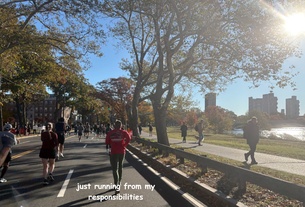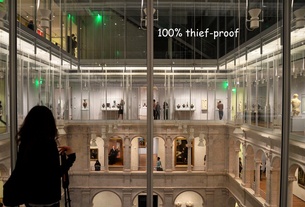{shortcode-e3a483185dc1c031652935204e97af05be1dcbae}
When University President Abbott Lawrence Lowell, Class of 1877, introduced the House system at Harvard in the 1930s, he sought to unify upperclassmen, who had previously lived in disparate conditions across campus.
Yet, for much of its existence, the House system has been anything but equitable. Houses diverged significantly in their resources and attracted particular strains of the Harvard student body. Initially through a selection system based on student interviews with House masters and later through a student ranking process, the composition of each House differed by race, class, and interests.
Only in 1996 did the College implement a randomized sorting system to send freshmen out of the Yard and into the Houses, addressing the inequity of the residential system that had existed for more than 60 years.
Now, with construction on Leverett’s McKinlock Hall set to end in the summer and renovations on Dunster and Winthrop Houses scheduled to begin in the next three years, the House system again finds itself in the midst of change, as a massive renewal project seeks to update aging infrastructure and revamp community space.
However, questions remain as to whether current undergraduates are being left behind in the process. While students and administrators alike recognize the project’s long-term aim to smooth out structural variation in the House system, some express concern that in the short-run undergraduates will have to suffer through a system marked by greater inequality.
DIFFERENT HOUSES, DIFFERENT EXPERIENCES
While the Office of Student Life touts the House system as the “foundation for the undergraduate experience at Harvard College,” with differing facilities, locations, and room configurations, not all Houses are created equal. Some boast squash courts and rock-climbing walls, while others offer a multitude of single bedrooms or a conveniently fast walk to class.
“It’s not an equal process,” says Rob C. Gunzenhauser ’15, “but I like to think that somehow, somewhere, everything works itself out.”
Gunzenhauser, an Adams House Committee co-chair, cites not only physical assets like the Pool Theater as contributing to Adams’ unique identity, but also the culture of acceptance fostered through House traditions like Adams’s Drag Night.
{shortcode-7f889f631cd4968c5408010c0ee07f5b511f6489}
Distinct amenities offered by each House play a role in shaping diverse student experiences. While students pay uniform room and board, set to cost $14,669 for the 2014-2015 school year, those in the unrenovated River Houses must frequently live in walk-through doubles, while all residents of Mather House and many in the Quad enjoy spacious singles.
Jacob S. Miller ’15, a Currier HoCo co-chair, says he believes that Currier residents find that “even without renovations, the rooming quality is very, very high,” as their House boasts some of the largest suites on campus, as well as a plurality of single bedrooms.
Others say that inherent differences in the core features of the Houses, such as room size and distance to the Yard, are hard to overlook.
“It shouldn’t be that something totally random carries so much weight,” says former Undergraduate Council President Tara Raghuveer ’14, referring to the centrality of House life at the College.
{shortcode-fb1dcf86d6781c59bb3c15670ed7bb510d3916b5}
“But saying the two things at once, one, this is totally random, and, two, this is supposed to be your everything, you’re really setting yourself up for failure, setting people up for expectations you can’t possibly meet,” she continues.
Administrators agree that Houses are structurally different, but contend that the positive and negative aspects of each House balance each other out.
“Almost every House has something that makes it less attractive,” says Dean of Freshmen Thomas A. Dingman ’67.
Co-Master of Eliot House Gail A. O’ Keefe says that staff, tutors, and masters work hard to “smooth out the rough edges” created by physical differences through establishing a vibrant and unique social community in each of the Houses.
For some students, though, the presence of such communities is not enough to assuage what they see as vast differences in experience brought about by the housing lottery.
Raghuveer, who used to live in Currier but moved off campus with her blockmates for her senior year, says that she thinks that balance is often unachievable given differences in student preferences.
“The singles in the Quad doesn’t make the distance okay, and the short distance in the River doesn’t make the rooming situation okay,” says Raghuveer. “Those things aren’t equal, necessarily.”
Claire R. Leibowicz ’16, who is hoping to transfer with her blockmate from Pforzheimer House for the upcoming school year, says that while she loves the House community, the distance made her experience at the College very different from that of her friends who live along the River.
“There’s no worse feeling than standing in the dead of the winter at Widener gate with a million things to do and you don’t even know when the next shuttle is going to come,” Leibowicz says. “It just kind of feels like you’re living your life on someone else’s schedule. And there’s nothing worse than when you’re at a friend’s room…and it’s like, ‘do I leave in two minutes or do I leave in 41 minutes?’”
STRIVING FOR EQUALITY
University administrators hold that the current renewal effort will bridge significant variation between the Houses.
The 2009 Report on Harvard House Renewal outlined the project’s goal of offering similar basic amenities across the system, while maintaining each House’s unique physical profile.
Among its recommendations for the project, the report calls for all Houses to feature “key activity spaces,” like a library and TV room, as well as “at least one unique specialty space,” such as a wood shop or printing press.
{shortcode-ef9c5fa781cd13ecdcc5709794e44d2e3ffbdfb2}
According to Assistant Dean of Faculty of Arts and Sciences Physical Resources Merle Bicknell, one of the primary goals of House renewal—a project set to cost more than $1 billion—is to preserve the historic character of each individual House. Yet the renewal project also offers an opportunity to promote more consistency in House facilities.
“Through renewal, each House will retain its unique character and traditions, yet each House will offer students access to similar amenities,” Bicknell writes in an email.
Renovations will also equalize the rooming situations for seniors, according to Associate Dean of Student Life William Cooper ’94. Cooper writes in an email that plans for House renewal include providing all seniors with “n+1” housing.
Some students say they think House renewal will equalize the residential experience by expanding accessibility and possibly establishing more uniform housing quality.
Quincy HoCo Co-Chair Chanel E. Washington ’15 says she appreciates the installation of more elevators under renewal plans, as the majority of the Houses are not fully accessible to people with physical disabilities.
Miller also cites renewal’s role in potentially designing living spaces on the River that are on par with the rooming quality in the Quad.
“[With House renewal,] River Houses are at least getting closer to the kind of housing folks in the Quad have been lucky enough to have for years now,” he says.
However, changes to brick and mortar cannot alter certain essential elements of the Houses. Construction, for example, will not shorten the walk down Garden St., a distance which many students cite as the main disadvantage to residence in the Quad.
“The biggest drawback to Currier is just distance, which renovations don’t really do that much about,” Miller says.
RENEWING INEQUITY
In addition to such inherent limitations of renewal, the project may exacerbate pre-existing discrepancies, as renovated Houses coexist with those still awaiting renewal.
“Students won’t be in these [renovated] spaces and experience the renewal that their friends are experiencing and [will] feel envious and unhappy about it,” says Dean of Student Life Stephen Lassonde, citing the considerable time it will take to renovate all the Houses. “That’s just the pain of this process, and there’s no way to avoid it.”
But with renewal projects set to remain along the River for some time to come, some students are concerned that perceptions of the Quad Houses will suffer.
{shortcode-529aebac019f3972308ea605c0ee80e4edf70467}
“There will be students here probably for all four years that exist at a Harvard where the River Houses are just way better than the Quad Houses,” Raghuveer says. “And you need to think about how to make that a little bit more equitable.”
According to Currier House Co-Master Elizabeth A. Ross, structural updates to the Quad Houses that have yet to be renewed will ensure that the Quad is not seen as a “second best option.”
“You can’t just leave them until 2020,” Ross says of the Quad Houses. “You have to make sure that there are renovations and improvements that kind of go along parallel, so that when they do come to renovate it—in the interim—there will have been things that we can all do to make sure that they don’t slip too far behind.”
But the inequities that come with the slow renewal process extend beyond the physical qualities of each House and affect students financially.
In a previous interview, Cooper says that the goal to increase House common spaces took priority over the provision of storage space, which will eventually lead to the loss of on-campus storage facilities. Once the renovations on a House are completed, students will be asked to pay for off-campus summer storage through the Harvard-sponsored Collegeboxes or an outside service.
The average cost of storage at several hundred dollars will be shouldered by Quincy students beginning this summer and Leverett students next summer, while residents of other Houses farther down the renewal pipeline may not face this additional cost for another decade or more.
Washington acknowledges that Quincy’s previous free storage was a privilege that students were fortunate to have enjoyed, but she says she sees an equity issue with the loss of that privilege.
“The way that as each House becomes renewed they lose their storage creates this inequality because you don’t choose your House—it’s done at random,” she says.
Students also raise the question of whether renovated housing is indeed more desirable. Upperclassmen previously opted out of inhabiting the new rooms in Stone Hall, and while Washington praises the patio and high-tech social and study spaces created in the new dorm, she adds that students have generally found the renovated room clusters and public common rooms to be less attractive than the traditional suites in New Quincy.
With the timing and extent of any renovations beyond those on the Neo-Georgian River Houses remaining unknown, these inequities between Houses may exist indefinitely.
“The River Houses are about 80 years old, so it made sense to start there,” Bicknell writes. She adds that the completion of Dunster’s construction will prompt a reassessment of renewal to determine the best path forward, but stresses that the subsequent renewal of the remaining Houses is not guaranteed.
“Beyond [the renewal of Winthrop,] there have been no decisions or announcements made regarding further projects. But our hope is that all Houses will have an opportunity to be renewed,” she writes.
—Staff writer Nikki D. Erlick can be reached at nikki.erlick@thecrimson.com. Follow her on Twitter @nikkierlick.
—Staff writer Steven S. Lee can be reached at steven.lee@thecrimson.com. Follow him on Twitter @StevenSJLee.


